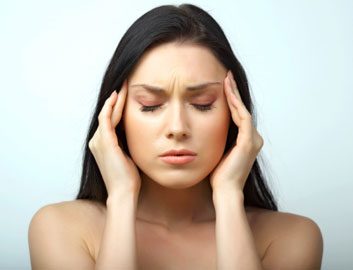
The ups and downs of “Aunt Flow”
Hormone changes during your monthly cycle affect you all month long. We asked Dr. Guylaine Lefebvre, chief of obstetrics and gynecology at St. Michael’s Hospital in Toronto, to explain what happens to your body during the typical monthly cycle.*
*Also applies to women on hormonal birth control, so long as it’s the type that does not interfere with or prevent ovulation.

Week 1
Day 1 of your cycle is the first day you get your period. The textbook cycle is 28 days in length, but a normal one can be anywhere from 21 to 40 days.
Your period occurs because, in the absence of a pregnancy, levels of estrogen and progesterone have fallen. (Progesterone falls to zero and estrogen is low.)
Some women may experience estrogen-withdrawal headaches in the first few days of bleeding, but these go away as the hormone begins to rise.
During menstruation, the uterus has contractions due to the release of chemicals called prostaglandins. This can also affect the bowels and some women may experience diarrhea or constipation, says Lefebvre.

Week 2
Estrogen continues to rise, releasing endorphins, while progesterone levels remain at zero. This makes pain centres less sensitive. (Do you get eyebrow or bikini waxes? Schedule them for this week.)
In some women, libido peaks near the end of this week, which may be nature’s way of encouraging intercourse just before ovulation-when you’re most likely to conceive. According to a 2013 study in The Journal of Sexual Medicine, the clitoris grows up to 20 percent larger and is more easily engorged around day 14.

Week 3
Ovulation occurs. Estrogen levels drop for a day or two. Sometimes this reduction is enough to cause a bit of vaginal spotting and some women may experience ovulation pain.
Progesterone starts to rise after ovulation, and that can make breasts tender and pain centres more sensitive. At its peak, progesterone may sap your energy, and leave you feeling bloated and cranky.

Week 4
At this point, many women will be able to sense that their period is coming, due to breast discomfort, bloating and other PMS symptoms, says Lefebvre.
Progesterone and estrogen levels begin to fall 48 hours before the new period (which marks the start of the next month’s cycle). The fall of these hormones can spark food cravings. (Back away from the potato chips and ice cream!)
Want to monitor your cycle more closely? Use an app like Period Tracker (find it at iTunes), which helps predict when you’ll get your period.
Related:
• A surprising reason to track your periods
• 3 ways to relieve PMS symptoms
• Is it safe to stop your period?
